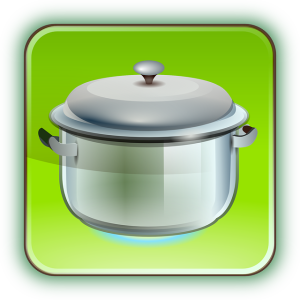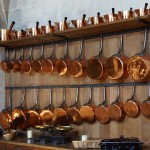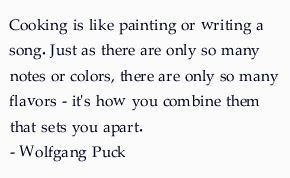Tip #1: Evaluate Your Needs
Needs
Before you go and spend your money on a pots and pans set, take some time to check your own needs first. A lot of people look through the catalog and buy the first shiny new set that catches their attention. But does the set that you are buying suit your needs? For example, if you are a busy mom and don’t have the time to hand-wash your kitchenware, then you obviously need something that is dishwasher-safe. A lot of nonstick cookware do not fall into this category and hence, care should be taken when you make your purchase.
Other common needs that you may need to consider include:
- Is it oven-safe?
- Can it be used on induction, ceramic or glass stove tops?
- Is it nonstick?
- Does it need maintenance (seasoning)?
- Can you use metal utensils?
- Is it safe to be used on high heat?
- Does it pose any health risk?
These are just some of the issues that you may want to think about because not all cookware would be appropriate for everyone. Some people shy away from Teflon-type of pans while others have no hesitation to use them, especially as an omelette pan. So, evaluate your needs and what you are comfortable of before you go shopping.
Tip #2: Do You Need The Whole Set?
If you are starting out with zero, then obviously a set is a good buy. It is more economical. But if you already have a few pots and pans lying around at home, then see if it would be better to buy a few individual pieces rather than the whole bundle. Usually, you don’t end up using every single piece in the set. There will be one or two favorites that are used heavily while the rest are hardly touched. If this is the case, a set may not be necessary. Remember that you will also need the storage space for all of the pieces. So, sometimes, buying just the individual items that you need is not exactly a bad idea.
While getting the whole package works out to be cheaper, it is also riskier. If you end up not liking the set for some reason or other, you will be stuck with 10 or more of these pieces. To work around the problem, try out an individual piece first. If you really like it and need more of the pieces, then only invest in a whole set.
Tip #3: Take Note Of Your Cooking Habits
Some pans cannot be used on high heat. A lot of nonstick pieces have this characteristic. Others need a longer time to heat up such as cast iron. In terms of the food cooked, many prefer a healthier option now with little to no oil being used. Still, others like a good sear on their meat.
So, what you normally cook and how you cook would have a bearing on the type of cookware to use. If you are the type who like to stir fry your food on high heat, then you would be better off with a stainless steel pan than a nonstick one. If you are trying to eat healthily and cutting down on fats, then perhaps a ceramic cookware set could be the best option.
Rather then adjusting your habits to match your cookware set, get one that suits your cooking style. That will be easier and you will have less problems taking care of it in the long run.
Tip #4: Check The Weight Of The Pieces
While a heavier piece will tend to feel more solid and durable, you will have to be able to lift it with ease. Once you have filled the pan or pot with food, it could get very heavy and this might not be ideal for those with a weaker wrist or arm. Also, if you like to lift up your frying pan to toss or flip your food while cooking, you need to make sure that you have a pan with a weight that you are comfortable with.
So, light weight cookware like the Rachael Ray Porcelain Enamel 10-Piece set may not necessarily be a bad thing while a heavy one is not all good either. It really depends on your preference and what works best for you given your own arm strength.
Tip #5: Read The Buyer Reviews
The consumer reviews and ratings is a great way to get an indication as to the quality of the cookware. When you read the reviews, you will get an idea what are the common problems with the item in question and if you end up buying it, how you could prevent the same from happening.
Usually, a set with hundreds of good reviews would still attract a minority of complaints. That is normal because no product can satisfy 100% of the buyers. But reading both the positive and negative reviews will give you a good idea if the cookware set is worth the risk of buying and if you can accept and live with the bad points of the product.
Tip #6: Check The Size Of The Pieces
Going over the sizes is probably the first thing you should do but some people never seem to bother. Maybe it is easy to overlook this step when you are buying a cookware set because you tend to think that there are bound to be saucepans and fry pans in there that will fit your needs. But unfortunately, that may not always be so. Take the skillet in this bundle, for example. The Cook N Home Nonstick Ceramic 10-Piece Cookware set comes with 2 skillets – an 8-inch and 9.5-inch. But would these fit a larger family? Maybe not.
So, don’t take for granted that the items will be of the right size to accommodate your cooking needs. They could be too big or too small, depending on how many people you normally cook for.
Conclusion
The above are 6 useful tips on buying a cookware set. If you spend your money on the right cookware, it can give you a lot of pleasure cooking in the kitchen and it will be worth every penny that you spent. So, choose wisely because these are items that you would be using practically everyday to make yourself and your family that 3 meals a day.



 0
0 



Speak Your Mind